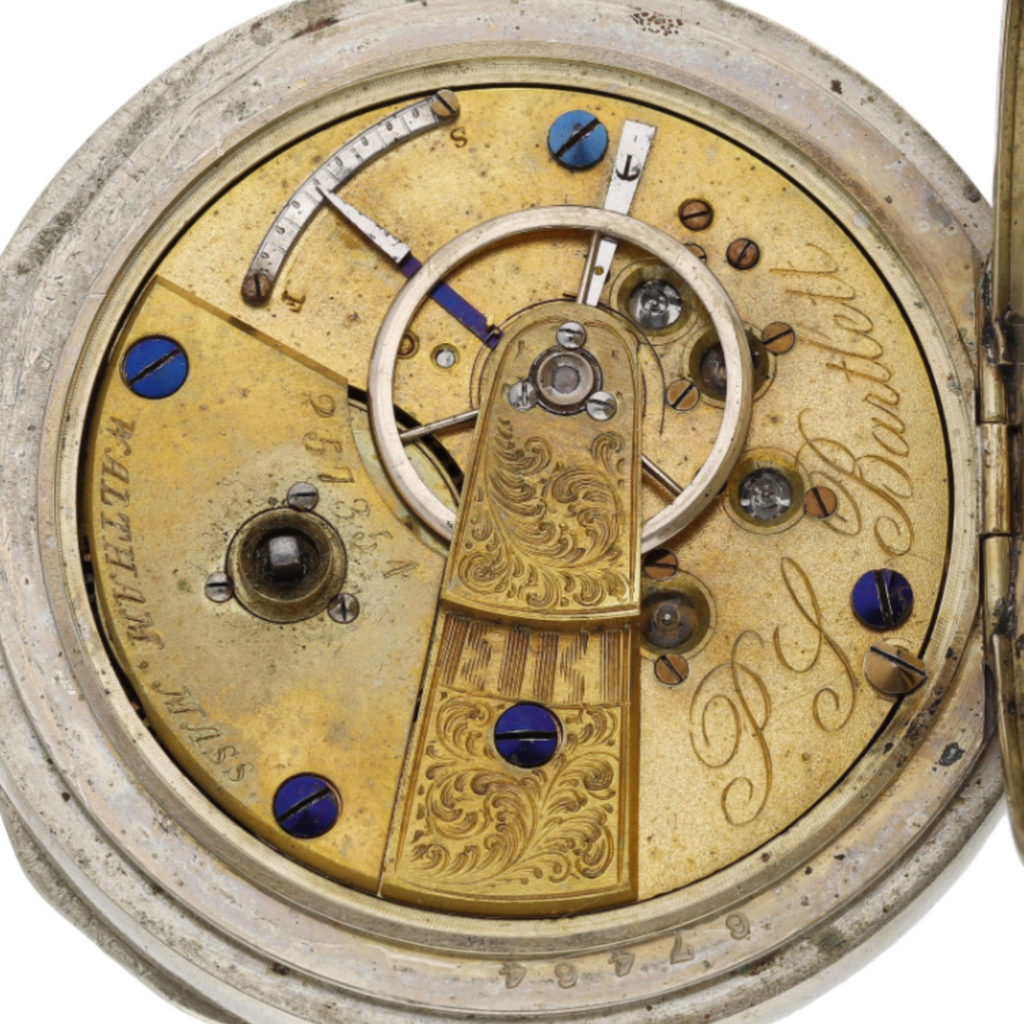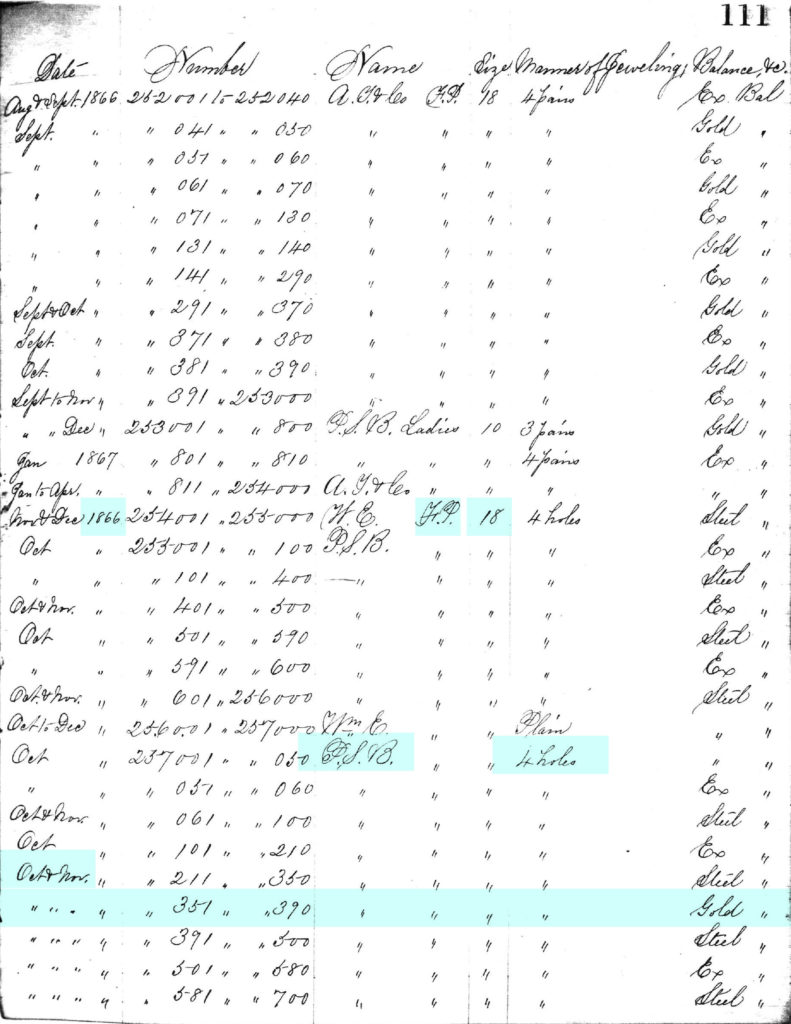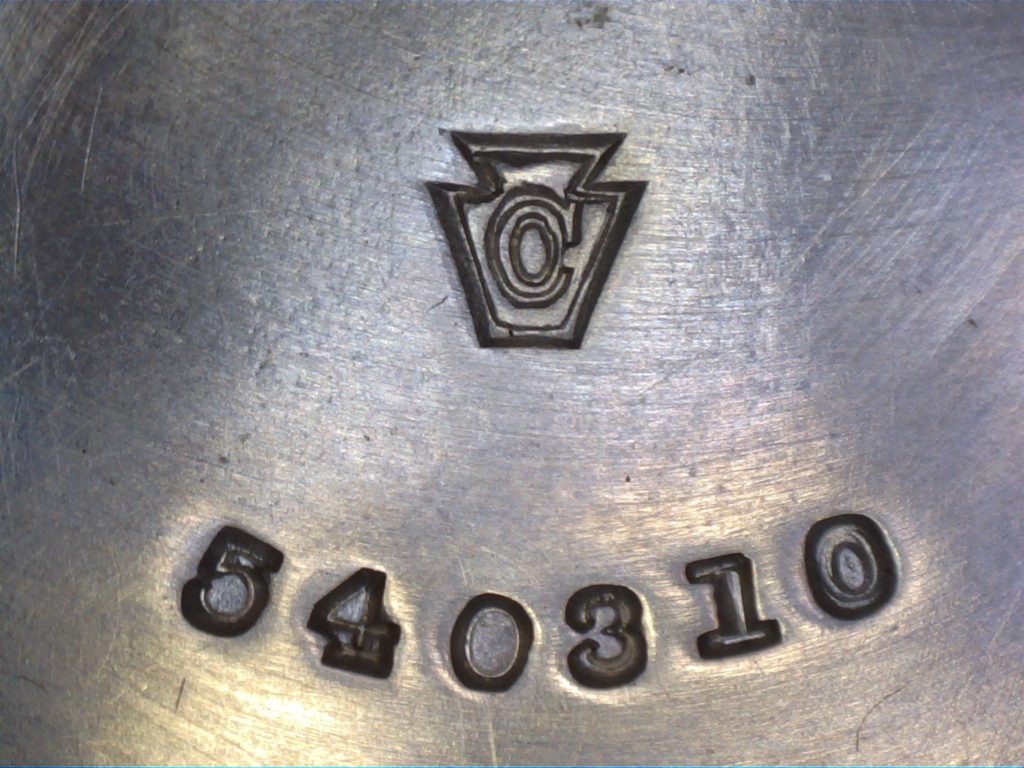[Updated] Civil War Era Waltham Watch with Faked Robert E. Lee Inscription
[May 29, 2020] Update: After bringing this research to the attention of Dix Noonan Web, the McLean/Lee watch has been removed from the June 9th auction.
Dix Noonan Web Response:
Thank you for contacting us, and for the chance to respond to your research.
We at DNW aim to be as clear and accurate as possible in our catalogues, and in this instance, despite this watch having being sold through Christies, we agree with your findings that the authenticity of the inscription is indeed in question here.
We will of course be withdrawing the lot from sale to avoid any misinterpretation of the watch’s history, and we appreciate you bringing the issue to our attention.
Frances Noble
Head of Jewellery Dept
Associate DirectorMay 29, 2020
Timepieces with documented connections to the American Civil War attract attention from a variety of collectors and often demand premium prices. These watches offer an intriguing intersection for collectors of Civil War memorabilia and horology. However, not many specimens have the prestige of a direct association with events that ended the Civil War.
On June 9, 2020, Dix Noonan Webb is scheduled to auction a pocket watch with impressive claims of such an association. The watch includes an inscription implying it was given as a gift to Wilmer McLean by Robert E. Lee shortly after the conclusion of the Civil War. However, an examination of the movement and case provide evidence that this inscription is not authentic, unscrupulously added at some point in history to increase the perceived value.
The Man: Wilmer McLean

Photo Courtesy of NPS
Wilmer McLean played an important role at the beginning and end of the American Civil War. As the war was starting, the first Battle of Bull Run transpired on McLean’s plantation in Manassas, Virginia. Four years later, as General Robert E. Lee planned a surrender to Lieutenant General Ulysses S. Grant, he sent a messenger to find a place to meet near Appomattox Courthouse, Virginia. The messenger soon approached the new home of Wilmer McLean to request use of his property for the meeting. McLean agreed. Later that day, Lee surrendered to Grant in the parlor of the McLean house, effectively bringing the Civil War to a close.
According to the history proposed by the inscription on the McLean/Lee watch, nearly a year later, Robert E. Lee presented Wilmer McLean a watch as a token of gratitude for providing the location for his surrender.
The Movement
The movement fitted in the McLean/Lee watch was manufactured by the American Watch Company in Waltham, Massachusetts. It is classified as an 18-Size “P.S. Bartlett” grade, featuring 11 jewels and a solid gold balance wheel. The movement is marked “P.S. Bartlett – Waltham, Mass. – 257354.”

Note: Dix Noonan Webb incorrectly reports the serial number as 357354. A close inspection of the movement reveals the first digit is a “2” and not a “3.” Furthermore, the auction description conveys the grade as “P.J. Bartlett” instead of “P.S. Bartlett.” These glaring oversights provide important context as we analyze the authenticity of the watch further.
The Case
The P.S. Bartlett movement is fitted in a key-wind case marked “Silveroid” and stamped with the serial number 3067464.

An elegant inscription is revealed on the cuvette that associates the watch with the Civil War.
In grateful appreciation
of hospitality rendered to
WILMER McLEAN
General Robert E. Lee
March 3rd 1866

Questionable Authenticity
Inscription Date
Factory ledgers from the American Watch Company (Waltham) detail the run from which this movement originates. The batch starting at serial number 257351 and ending at 257390 is recorded as a continuation of a broader run of 18-Size Full-Plate P.S. Bartlett movements. The ledger designates the jeweling as “4 holes,” indicating 11 jewels total with unpaired jeweling on the top plate. This information is consistent with the movement fitted in the McLean/Lee watch.
However, the production dates recorded in the American Watch Company ledgers indicate the run from which the movement originates (257351-257390) was manufactured in October-November 1866. This is inconsistent with the presentation inscription dated “March 3rd, 1866,” at least seven months preceding the production of the movement. This is not entirely conclusive, however, as the factory ledgers have been known to include errors.

257351-257390:
October-November 1866, “P.S.B.” (P.S. Bartlett), Full Plate, 18 Size, “4 Holes” (11 Jewels), Gold Balance
Silveroid Case
While the production ledgers certainly cast doubt on the authenticity, the case material provides conclusive evidence to brand the McLean/Lee watch as inauthentic. Despite the case manufacturer not being identified within the auction description, the “Silveroid” mark displayed in the listing photos is associated with the Keystone Watch Case Company.
Keystone Watch Case Company Trademark
The auction page does not include any photos detailing the marking under the cuvette. However, similar Silveroid cases support the fact that the McLean/Lee watch likely features the trademark of the Keystone Watch Case Company under the cuvette.
Images of a similar case are included below for reference and comparison. This particular case is estimated to have been manufactured around 1890.

c.1890
From Author’s Collection

“Silveroid” Marking
From Author’s Collection

Keystone Trademark
From Author’s Collection

From Author’s Collection

From Author’s Collection
Not only did the Keystone Watch Case Company not exist until 1882, but according to the trademark application, the familiar Keystone mark did not appear on products until January 1886.

“Silveroid” Introduction
The Keystone Watch Case Company did not own exclusive rights to the “Silveroid” term. It was used in other sectors of the jewelry industry, and the earliest mention found is from an October 1878 issue of the Jewelers’ Circular & Horological Review stating,
“Silveroid is the name of a new alloy employed in the manufacture of table-ware. It is said to have a fine texture, and is susceptible of high finish.”

This report was also published in a variety of newspapers across the country, marking the public introduction for the term. After eight years of sparse usage, the term benefited from a reintroduction in 1884 by Henry Wiggin & Co. of Birmingham, England.

The “Silveroid” nickel alloy watch case was introduced to the watch industry by the Keystone Watch Case Company in early 1886, as supported in the following advertisement published in the April 1886 issue of The Trader.

Conclusion
Perhaps the production dates recorded in the factory ledgers for the movement are inaccurate and the movement fitted in the McLean/Lee watch was actually manufactured earlier than the October-November 1866 date. Even so, the fact that the inscription exists on a case that could not have been manufactured earlier than 1886 leads to insurmountable evidence that someone faked the inscription to falsely claim a connection to Lee’s surrender at the end of the American Civil War.
By the time the Keystone Watch Case Company manufactured the Silveroid case that is now adorned with the elegant inscription, both Wilmer McLean and Robert E. Lee were deceased.
Note: The McLean/Lee watch was previously auctioned by Christies in May 1999, realizing a price of $12,650. This provides evidence that the inscription was added to the watch earlier than 1999.
We have reached out to Dix Noonan Webb for a response regarding this analysis.





A fine piece of detective work! Although I am no more than an amateur collector, I have seen enough cases to have had my doubts about the Silveroid trademark’s going back to as far as 1866, and this as soon as I began to examine your article.
Moreover, as an ex-teacher who studied languages and linguistics, I noticed what appears strange in the wording and/or arrangement of the inscription: “for hospitality rendered to…” would suggest that the hospitality was extended to Mr. McLean (by a third party?), not to General Lee BY Mr. McLean. Engravers of the era were very careful in their use of language in inscriptions, in my experience; and for good reason. Thus, if this were indeed the wording chosen, I suspect the engraver would have moved the word “to” to a separate space to visibly separate it from the line about hospitality. I have seen many such engravings where the word “To” [often capitalized, as well] was thus made to act as both a link and a division. However, my “evidence” is by no means as strong as that which you have presented.
Thanks, Robert. You raise several valid points regarding the language that I had not considered. Excellent observation!